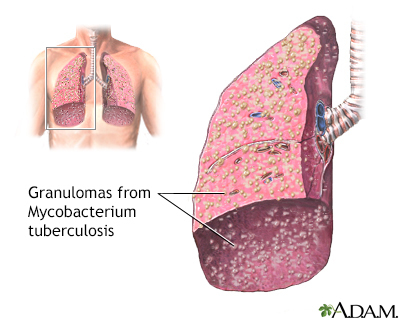A nurse is assessing a newly admitted client whose chief complaint is “coughing up blood” and whose recent history includes a productive cough and night sweats. What is the nurse’s priority intervention?
Initiate droplet precautions.
Consider standard precautions to be sufficient.
Transfer the client to a positive pressure room.
Initiate airborne precautions.
Transferring the client to a positive pressure room is inappropriate. Positive pressure rooms are designed to keep contaminants out and are used for protecting immunocompromised patients from infections. For a client with suspected TB, a negative pressure room is required to prevent the spread of infectious particles to other areas.
The Correct Answer is D
Choice A reason:
Initiating droplet precautions is not sufficient for a client presenting with symptoms such as coughing up blood, productive cough, and night sweats. These symptoms are indicative of possible tuberculosis (TB), which is an airborne disease. Droplet precautions are used for infections spread through large respiratory droplets, such as influenza or pertussis, but not for TB.
Choice B reason:
Considering standard precautions to be sufficient is incorrect. Standard precautions are the basic level of infection control that should be used in the care of all patients to prevent the spread of infections. However, for a client with symptoms suggestive of TB, additional airborne precautions are necessary to prevent the spread of the disease.
Choice C reason:
Transferring the client to a positive pressure room is inappropriate. Positive pressure rooms are designed to keep contaminants out and are used for protecting immunocompromised patients from infections. For a client with suspected TB, a negative pressure room is required to prevent the spread of infectious particles to other areas.
Choice D reason:
Initiating airborne precautions is the correct intervention. Airborne precautions are necessary for diseases that are transmitted through smaller respiratory droplets that can remain suspended in the air and be inhaled by others. Tuberculosis is one such disease, and initiating airborne precautions helps to prevent the spread of the infection to healthcare workers and other patients.
Nursing Test Bank
Naxlex Comprehensive Predictor Exams
Related Questions
Correct Answer is B
Explanation
Choice A reason:
Monitoring skin color is not specifically required for clients on ethambutol therapy. While changes in skin color can indicate various health issues, they are not directly related to the side effects of ethambutol.
Choice B reason:
Visual acuity should be monitored because ethambutol can cause optic neuropathy, which can lead to vision loss. Regular eye exams, including tests for visual acuity and color discrimination, are recommended to detect any early signs of optic nerve damage.
Choice C reason:
Monitoring cardiac rhythm is not specifically required for clients on ethambutol therapy. Ethambutol does not typically affect the heart’s rhythm. Cardiac monitoring would be more relevant for medications that have known cardiotoxic effects.
Choice D reason:
Monitoring urine output is not specifically required for clients on ethambutol therapy. While renal function should be monitored due to the drug’s excretion through the kidneys, urine output itself is not a primary concern unless there are signs of renal impairment.

Correct Answer is D
Explanation
Notify the surgeon of the blood pressure: While notifying the surgeon of the elevated blood pressure is important, it is not the immediate first action. The nurse should first address the elevated blood pressure by administering the prescribed antihypertensive medication. Once the medication is given, the nurse can then notify the surgeon if the blood pressure remains elevated or if there are any other concerns.
Choice B reason:
Document the blood pressure on the pre-op checklist: Documentation is crucial for maintaining accurate medical records, but it is not the first action in this scenario. The nurse should prioritize administering the antihypertensive medication to manage the client’s elevated blood pressure. After addressing the immediate concern, the nurse can document the blood pressure and any interventions taken.
Choice C reason:
Have the client relax and take deep breaths: Encouraging the client to relax and take deep breaths can help lower blood pressure temporarily, but it is not a substitute for administering the prescribed antihypertensive medication. This action can be taken in conjunction with medication administration but should not be the first or only action.
Choice D reason:
Administer the antihypertensive medication: Administering the antihypertensive medication is the correct first action. The client’s blood pressure is significantly elevated at 174/88, and the medication is necessary to manage this condition. According to perioperative guidelines, most antihypertensive medications should be continued until surgery to prevent complications such as hypertensive crises. Administering the medication will help stabilize the client’s blood pressure and reduce the risk of perioperative complications.
Whether you are a student looking to ace your exams or a practicing nurse seeking to enhance your expertise , our nursing education contents will empower you with the confidence and competence to make a difference in the lives of patients and become a respected leader in the healthcare field.
Visit Naxlex, invest in your future and unlock endless possibilities with our unparalleled nursing education contents today
Report Wrong Answer on the Current Question
Do you disagree with the answer? If yes, what is your expected answer? Explain.
Kindly be descriptive with the issue you are facing.
